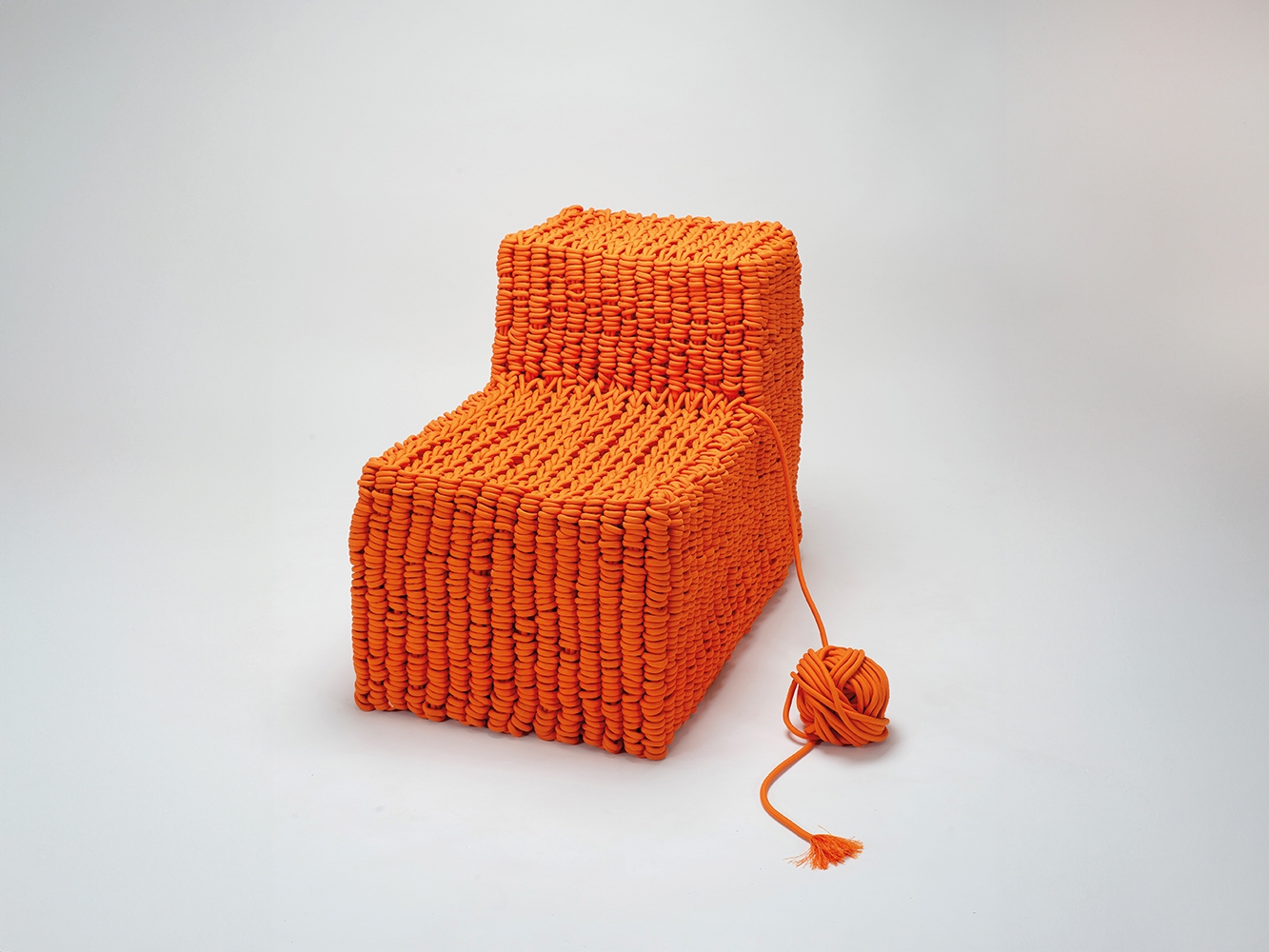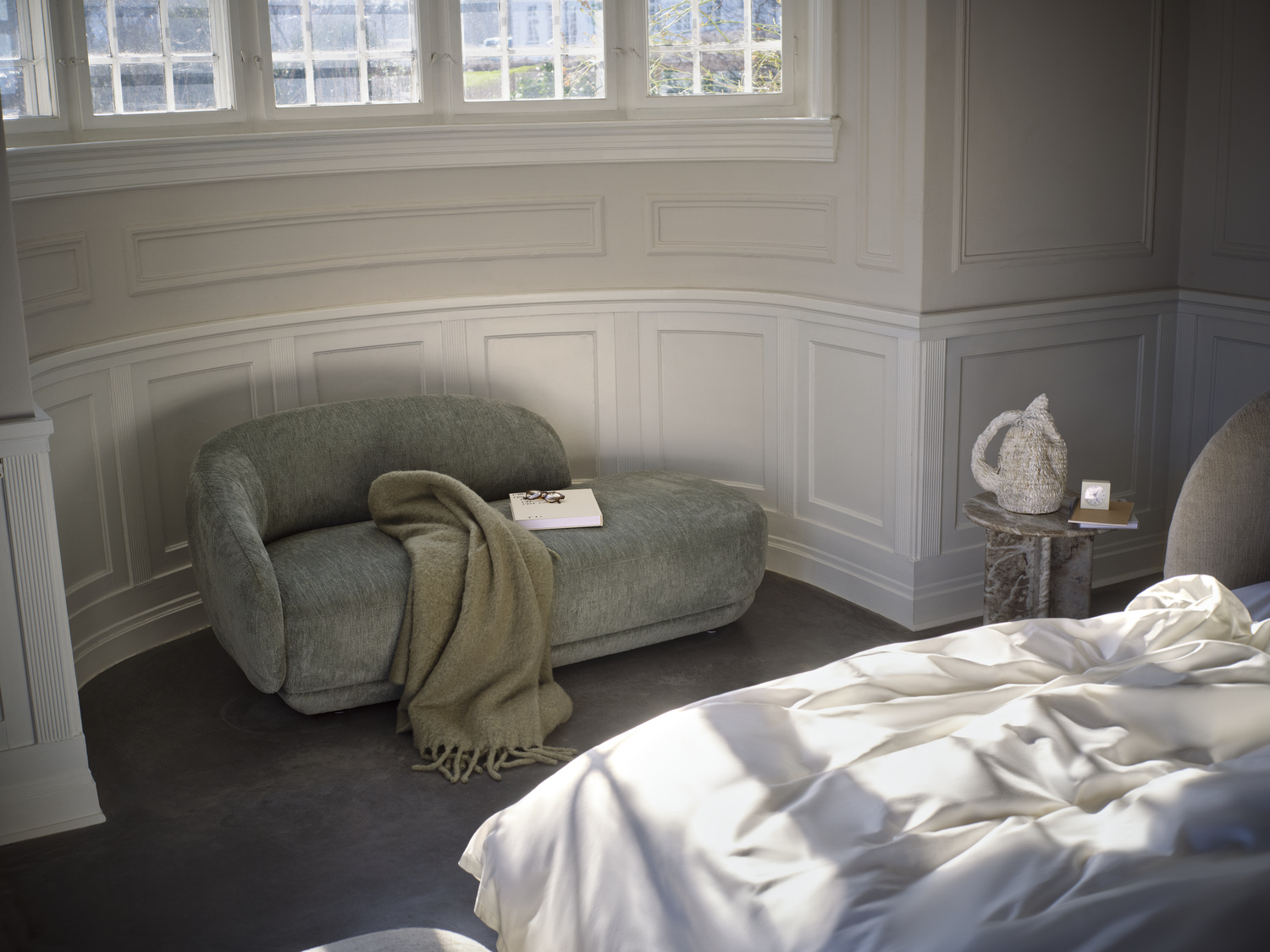Header: Markus Elblaus
Imagine a lounge chair made from just one continuous piece of rope. Not covered in rope, but made entirely of it. That’s exactly what designer Svea Tisell has created with her Kryss 2500m Lounge Chair. It’s a wild idea that uses a single 2.5-kilometre-long rope to build a complex, self-supporting chair. This is not just a concept. It’s a real piece of furniture from her new Swedish company, Kryss. This design has already gotten a lot of attention, as well as a SIT Furniture Design Award for its design.
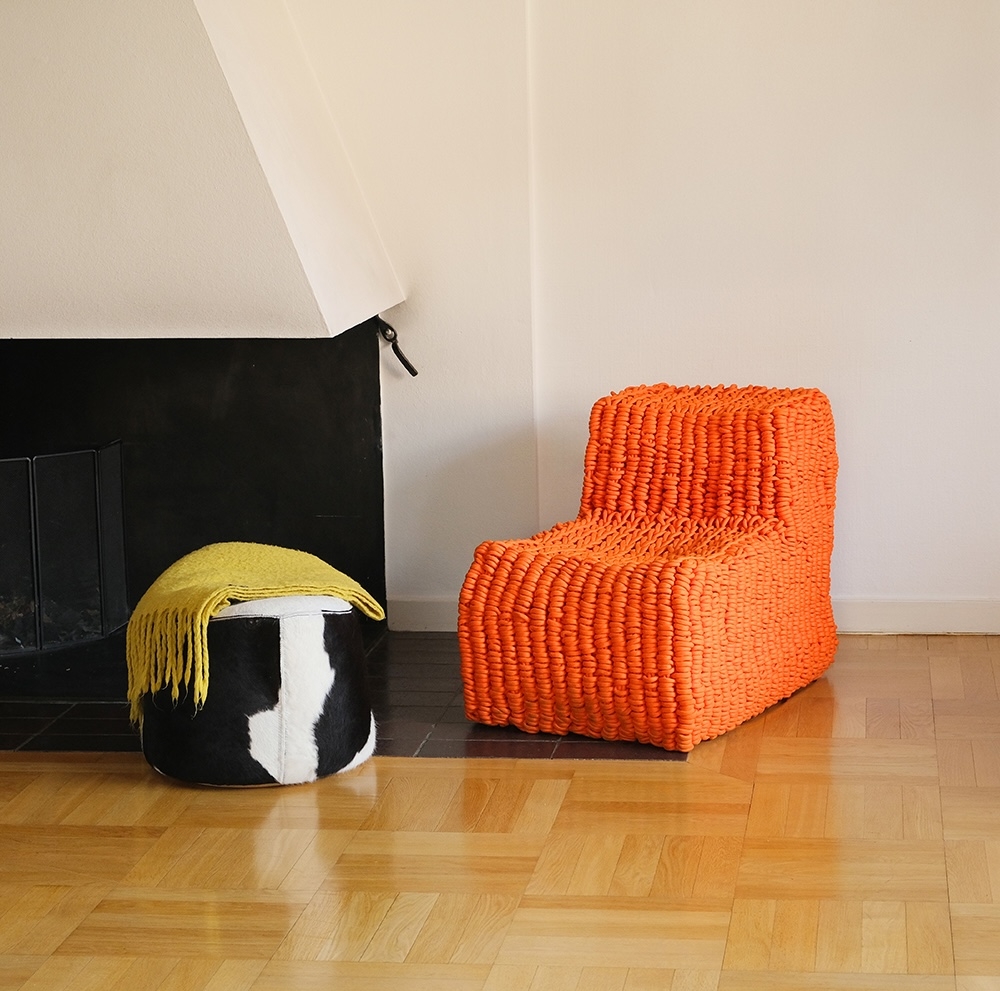
So, how do you weave a chair?
The chair is part of a larger series called ‘Entwined Objects’. Tisell, a graduate from Beckmans College of Design, uses a method called Multiweave. Estonian textile artist Kadi Pajupuu first developed this technique, but it was mostly used for art pieces. Tisell is one of the first to adapt it for functional, everyday furniture.
To make the chair, a special tool is needed: a platform with 345 small guides that help position the rope. The rope’s ‘warps’ (the vertical threads) are stretched from the top to the bottom of the structure. Then the rest of the rope is woven between these warps, building layers and creating a three-dimensional shape. When all 2.5 kilometres of the vivid orange 12mm shoelaces are used up, the whole thing is finished off with a single knot. This one knot ties the beginning and the end of the rope together, securing the entire structure.
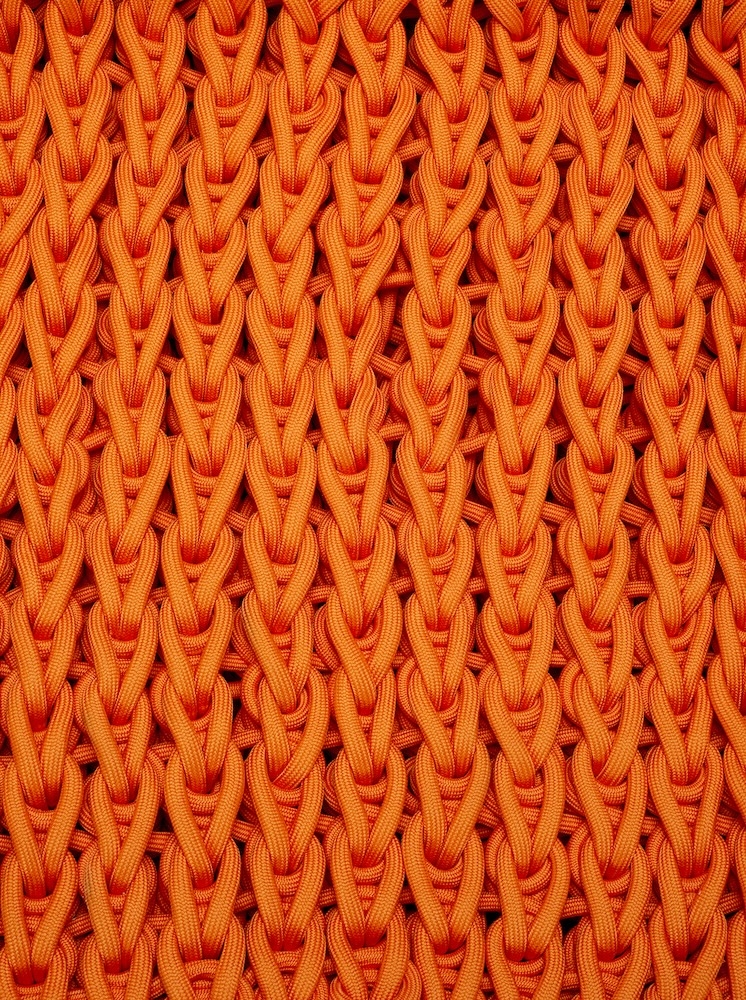
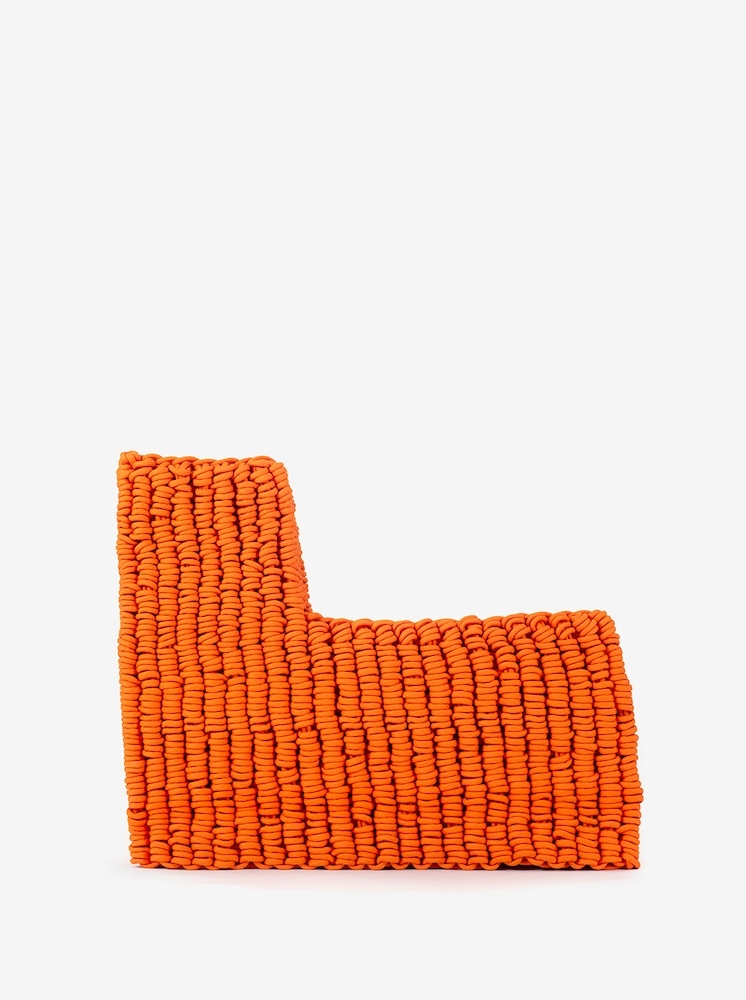
A chair that changes shape with you
The result is the first chair ever to be 3D-woven this way. What’s it like to sit in? The designer describes the feeling as “sinking into wet snow.” The structure gradually adapts to your body, creating a seat that is uniquely shaped by you.
When you first see the chair, it looks quite geometric and rigid. But the cool part happens when you interact with it. As soon as you sit down, the chair deforms and softens, transforming from an austere object into a sculptural piece molded by your own body. The textile is the structure. There’s no hidden wood or metal frame; the rope does all the work, acting as both the soft ‘fabric’ and the hard ‘frame’ at the same time.
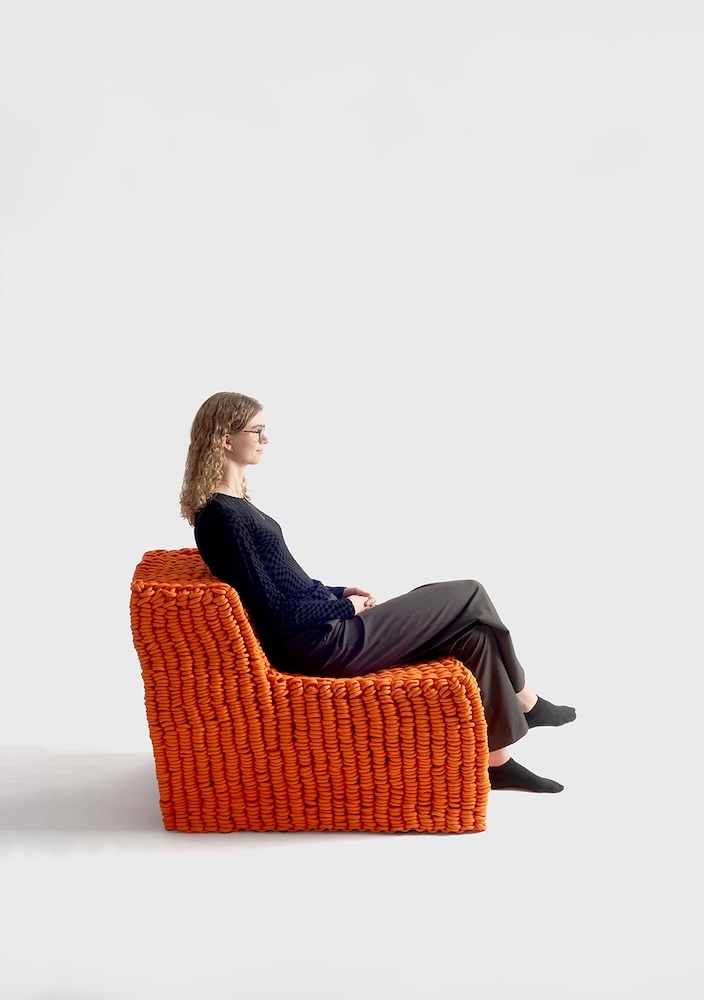
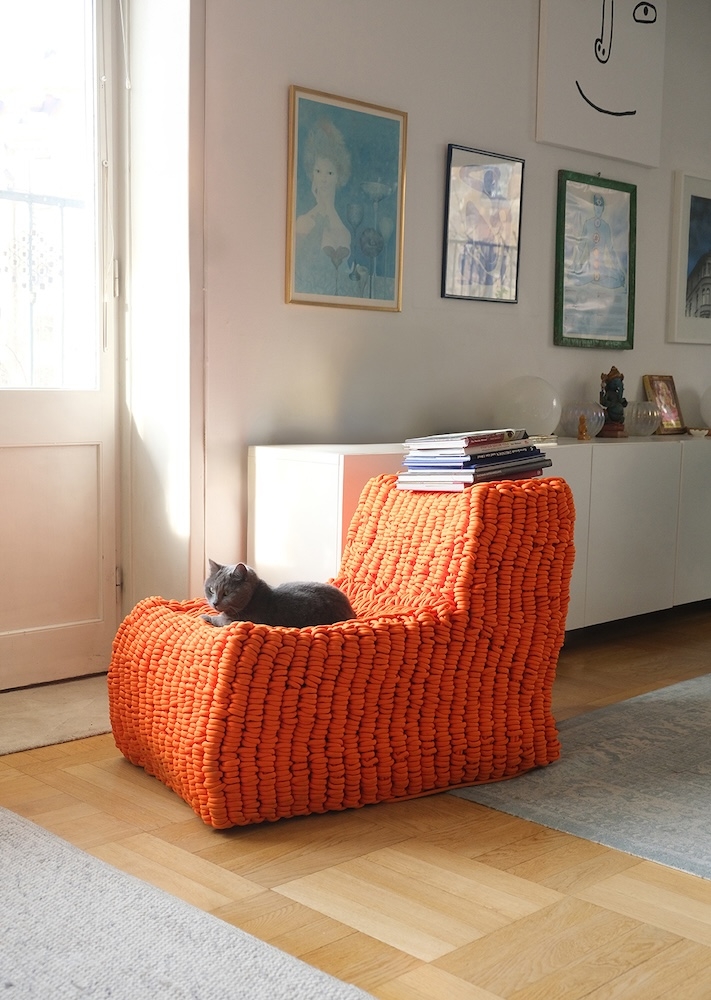
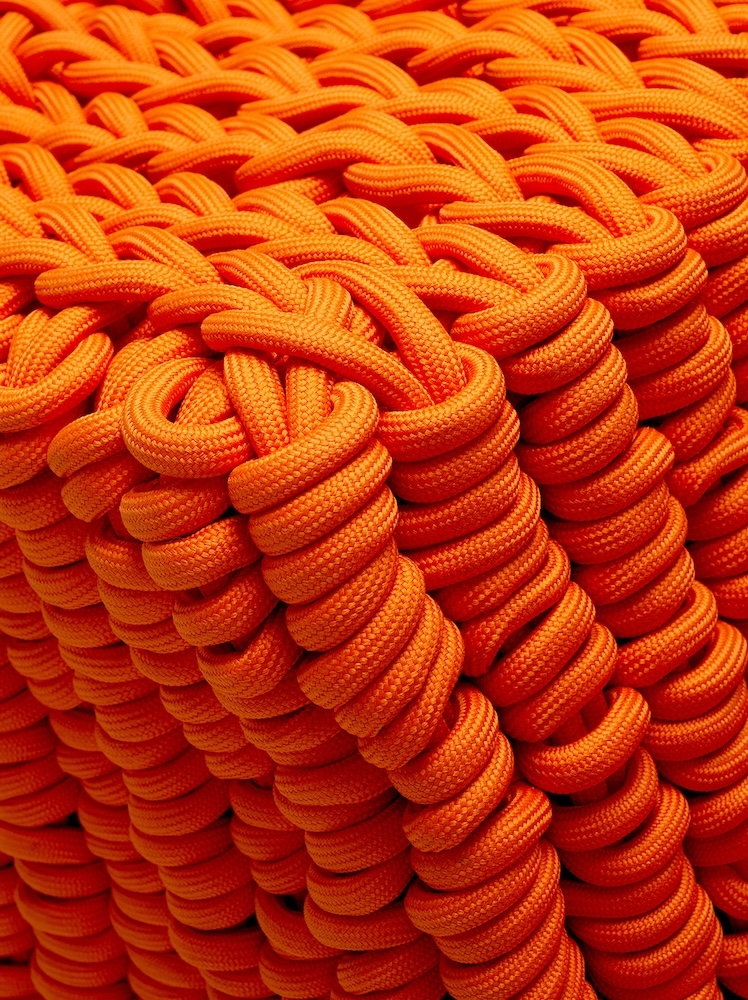
One material, zero waste
This “mono-material” approach is central to Tisell’s design philosophy. Growing up in an archipelago, she learned to be creative with simple materials, and that idea powers her company. The company sources its rope from materials like reclaimed climbing ropes or surplus shoelace production.
The smartest part of the design is its lifecycle. Because the entire chair is just one long rope held by one knot, it’s completely reusable. If you ever want to get rid of the chair, you just untie that final knot. The whole thing unravels, leaving you with a 2.5km rope, ready to be used for something completely new: no waste, no complicated recycling, just one material waiting for its next purpose.






